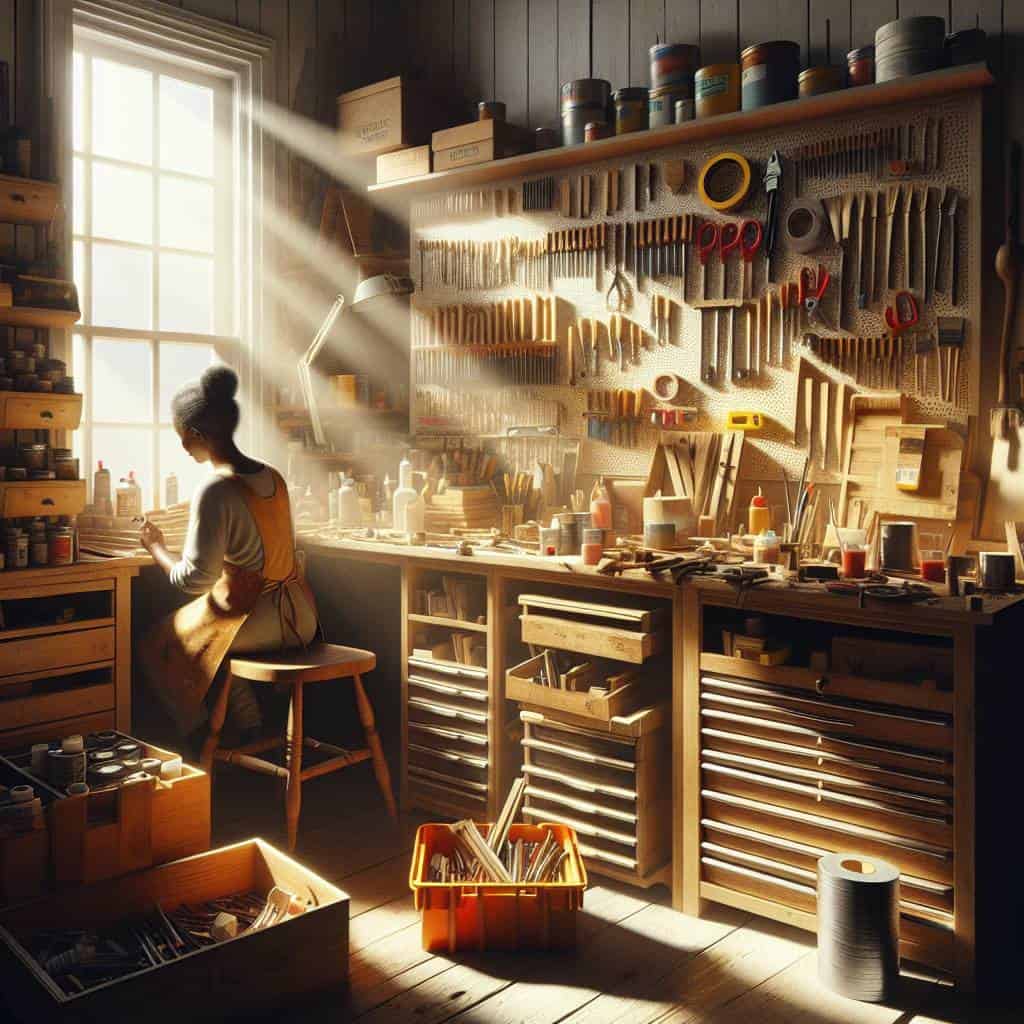I’ll never forget the day I tried to fix my leaking sink with a roll of duct tape and sheer optimism. There I was, ankle-deep in water, thinking I could outsmart a plumber. Spoiler alert: I couldn’t. But in that soggy moment of defeat, I realized something crucial—sometimes, saving money isn’t about cutting corners, but finding the right ones to turn. You see, in the world of DIY, every mistake is a lesson, and every lesson is a step toward mastering the art of doing it yourself without draining your wallet.

Now, if you’re tired of watching your hard-earned cash swirl down the drain with your dreams of affordable home improvement, you’ve come to the right place. We’re diving deep into the nitty-gritty of smart budgeting and resourceful planning. From scavenging the best second-hand tools to transforming waste into treasure, I’m here to guide you through the gears of frugal craftsmanship. Let’s roll up our sleeves, dust off those forgotten materials, and tackle this DIY adventure with the grit and savvy it deserves.
Table of Contents
The Art of Crafting on a Shoestring: When Budget Meets Creativity
I’ve always believed that the beauty of crafting lies not in how much you spend, but in the ingenuity you bring to the table. The challenge is to take what’s old, what’s discarded, and breathe life into it. Picture this: a pile of forgotten wood scraps and a half-empty can of paint. To some, it’s just junk. But to me, it’s the start of something beautiful. When your budget is tighter than a rusted bolt, your creativity needs to be as sharp as a new hacksaw blade. The trick is knowing where to find those hidden gems—your local thrift store, a neighbor’s garage sale, or even your own attic. It’s about seeing potential where others see waste.
Now, let’s talk tools. You don’t need a shiny new set of high-end gadgets to get the job done. A basic toolkit with a few well-loved essentials—hammer, screwdriver, pliers—can perform magic if you know how to wield them. It’s about smart planning, knowing which corners to cut and which ones to preserve. When you upcycle, you’re not just saving money; you’re reducing waste and adding character to your creations. And trust me, nothing feels better than finishing a project knowing you’ve turned a pile of odds and ends into something your friends will rave about. It’s the art of making do, of working with what you’ve got, and if you ask me, that’s where the real artistry lies.
Wisdom from the Workshop
The best budget is built with secondhand finds and a can-do spirit. Waste not—fix, reuse, and let your hands do the saving.
The Last Turn of the Wrench
Standing back and wiping the dust off my hands, I see more than just a finished project—I see a testament to what can be done when you refuse to let your wallet dictate your dreams. Saving money on DIY isn’t just about pinching pennies; it’s about the thrill of the hunt, the satisfaction of making something out of ‘nothing’, and the stories each reclaimed tool could tell if it had a voice. Every tool I’ve picked up, every piece of scrap that’s found new life, has taught me that ingenuity is the best currency.
This journey isn’t just about a toolbox full of second-hand treasures or a garage that echoes with the clang of metal and purpose. It’s about the grit it takes to see possibility in what others discard. It’s about planning smart, reducing waste, and embracing the imperfections that make each project uniquely yours. So here’s to the grease and grime, the busted knuckles and the stubbornness that drives us forward. May your next project be as rewarding and resourceful as the last, because in the end, it’s not just about saving money—it’s about crafting a life that’s as real and rugged as the roads we travel.